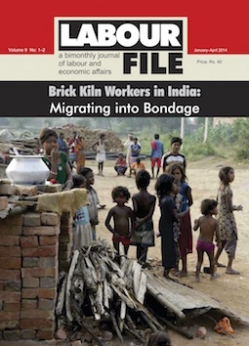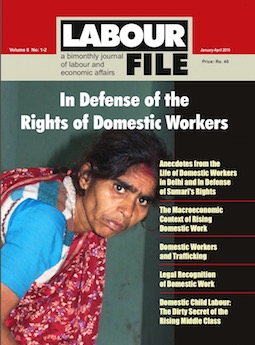Public-Private Partnership in ICDS: Privatisation versus Universalisation
Indrani Majumdar is a women`s activist and is assoiated with the Centre for Women`s Development Studies, New Delhi. (Indrani Majumdar)
One of the most crucial welfare programmes in India is the Integrated Child Development Services (ICDS), which primarily provides supplementary nutrition to well over 70 million children across the country. Official reports on ICDS generally begin by informing us proudly that ICDS is one of the world`s largest outreach programmes for early childhood care and development. Operating through a network of anganwadi centres, each run by one worker and one helper, the number of centres has grown from a few hundred centres in 1975 to more than 2½ lakh centres in 1992 and close to 6 lakh centres in 2002; it now stands at over 9 lakh centres.
Since the 2001 order of the Supreme Court directing the Government of India to universalise ICDS, which was reiterated and extended by the Court in 2004, and the acceptance by the Court of the requirement of 14 lakh anganwadis for universalisation in 2006, legal and institutionalised articulations of child rights have become more prominent in public discourse. Few recall that the ICDS`s continuous expansion was to a large extent driven by widespread, albeit more diffused, public demand that transformed it from a poor adjunct to the family planning/population control obsession of the Indira Gandhi-led government to a sizable programme, sufficient to be called a `flagship` programme by the UPA regime from 2004. Throughout the 1980s and 1990s, the popularity of the food/nutrition provided at the anganwadi centres by workers and helpers made the demands and promises of establishing anganwadis an integral part of local politics across the country. That the anganwadis generated public enthusiasm, even in the form of concrete criticism, demonstrated that the ICDS was catering to a real and felt need/demand for food and nutrition for childrenamong the children of the poor as well as their parents. Of course, the capacity of the ICDS to establish anganwadis, to provide food/nutrition and some exposure to pre-school education most crucially depended on the large frontline workforce of women anganwadi workers and helpers. These workers took the programme to the people; they established and ran the anganwadi centres, often in their own houses, all for a pittance termed as `honorarium`, which is but a euphemism for a salary that is way below minimum wage standards and insufficient to meet the workers` own bare minimum needs. Nevertheless, because it was a government-run programme, its stability seemed to be ensured and lakhs of women joined the cadre of workers and helpers.
This stability now stands in danger of being undermined by a renewed neo-liberal offensive against the ICDS, in which the promotion of public-private partnership forms a key policy component for the erosion/withdrawal of the government`s responsibility in running the programme. In February 2008, Renuka Chowdhury, Central Minister of Women and Child Development, called for public-private partnership in ICDS at a national workshop organised specially for this purpose. The push for reduced responsibility of the government in the ICDS and the devolution of funds and responsibilities to non-state actors is clearly under way and being promoted through World Bank inspired `reforms` in the management of the programme. Already, these so-called reforms have been initiated by the Ministry of Women and Child Development, arguing that “a paradigm shift is required in the ICDS Programme with a framework restructured to suit the current needs.” (ICDS IV Project Concept Note, September 2007, Ministry of Women and Child Development, Government of
It perhaps merits underlining that the World Bank has mastered the technique of using finance for a very small part of any public programme to influence the direction that is to be taken by the much larger funding provided by the state exchequer. So also in ICDS, the present amount of World Bank financial assistance provides for less than 1 per cent of the expenditure on ICDS and yet this small amount is being used to tune the restructuring of the entire programme towards the Bank`s neo-liberal and conservative dogma of reduced state involvement and expenditure in either the economy or in the provision of basic services and greater participation of private actors, who are all then given the title of stakeholders.
ICDS Reforms Project IV opens its attack with the statement, “the ICDS Scheme has failed to make a significant dent in reducing the proportion of underweight children, which continues to be one of the highest in the world (46 per cent in 2005-06 in 0-3 year age group).” True no doubt, but one would have thought that the universalisation of the ICDS so that no child would be excluded would then have been the area requiring most attention. But no, neither the lack of universalisation nor the practice of insufficient budgetary allocations and expenditure to ensure such universalisation are areas where reform is advocated. In fact, universalisation is summarily dismissed as unimportant in the statement, “mere physical expansion of the ICDS programme is not, however, enough to combat the complex problem of malnutrition.” Rather, what is offered is some verbose jargon such as, “it has become essential to harmonise the expansion of the programme and its content enrichment in order to accelerate the implementation in achieving the core objectives” which is further elaborated as requiring “multi-sectoral interventions and changes in key family care behaviors.”
Within such project verbosity lies the understanding given by the Bank in its 2004 `Discussion Paper` titled `India`s Undernourished Children: A Call for Reform and Action` in which its review of the ICDS programme began with the following assertion, “In India, child malnutrition is mostly the result of high levels of exposure to infection and inappropriate infant and young child feeding and caring practices… However, the commonly-held assumption is that food insecurity is the primary or even sole cause of malnutrition. Consequently, the existing response to malnutrition in
Further, again in clear opposition to universalisation, the Bank through its project argues that malnutrition is concentrated only in some pockets; so instead of expansion, ICDS should be targeted, being confined to only those who supposedly need it most, as defined in terms of districts or areas.
Even a cursory reading of the various changes introduced by the government in the management of the ICDS over the last three years as well as the reforms outlined in the ICDS Reforms Project IV documents makes it obvious that the central issue of inadequate allocations for ICDS is being evaded and the universalisation project subverted. A calculation in 2004, based on simple arithmetic, showed that a budgetary allocation of at least Rs 12,000 crores was required for the universalisation of ICDS. Yet, so far, the maximum amount provided four years later in the Union budget of 2008-09, has been approximately half of that requirement. While ignoring this crucial question, the proposed restructuring strategy being pushed by the government appears to be fourfold: a) under the garb of IEC, the responsibilities of the government are to be theoretically shifted on to the already hard-pressed families, reeling under the impact of declining incomes and increasing deficits in their own family expenditure caused by agrarian crisis on the one hand and the volatile employment scenario on the other; b) through emphasising micro-nutrient supplementation, private manufacturers of micro-nutrient enriched packaged food are to be progressively provided with assured demand through government procurement for ICDS, thus becoming partner beneficiaries; c) in between, through diverting several of the core functions of ICDS and its workers to NGOs, Self Help Groups and other private organisations, including the corporate sector, the government`s responsibilities and administration of ICDS is hollowed out and privatisation becomes a fait accompli; d) in the name of decentralisation and community participation, reworking of the functions of anganwadi workers so as to evade government`s responsibilities to both ICDS`s beneficiary children as well as ICDS workers and in so doing also dismantle the structures of employment relations between the government and anganwadi workers, facilitate private control over them and disempower them as workers.
Title of the Article: Public-Private Partnership in ICDS: Privatisation versus Universalisation
Name of the Journal: Labour File
Volume & Issue: 6 , 5
Year of Publication: 2008
Month of Publication: July - October
Page numbers in Printed version: Labour File, Vol.6-No.4&5, Special Economic Zones: Their Impact on Labour (Article - Public-Private Partnership in ICDS: Privatisation versus Universalisation - pp 45 - 48)
Weblink : https://labourfile.com:443/section-detail.php?aid=528




.jpg)
.jpg)


